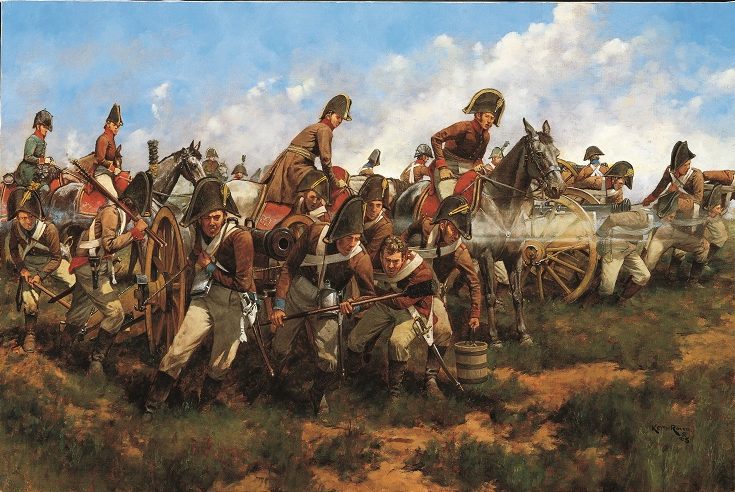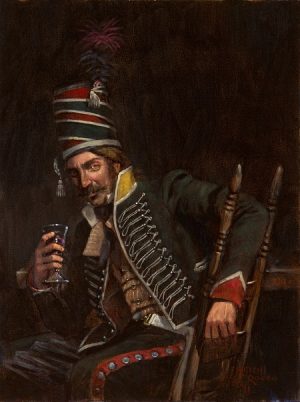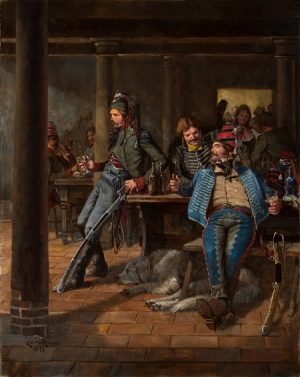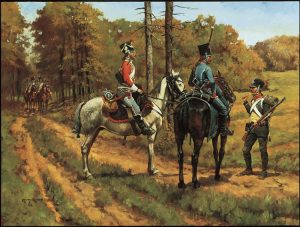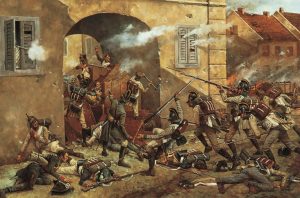Forward by Bricole!
Description
50 signed and numbered prints
Savage fighting had marked the first day and a half of the Battle of Aspern-Essling, as both towns changed hands, back and forth, each attack provoking a furious counter-attack. With their backs to the Danube, the Grande Armee had to stand and endure everything the Archduke and his inspired army could throw at them. For many Frenchmen, the worst came at the end, as the exhausted Austrians left it to their artillery to exact a high toll in vengeance for so many defeats.
Author Kevin Kiley, in his book Artillery of the Napoleonic Wars, sets the scene:
“What happened on the battlefield now marked the largest single concentration of artillery to date in the period. Charles withdrew his shot-up and demoralized infantry from the French center, and Oberst Josef Smola, the Artillery Chief for Hohenzollern’s Austrian II Corps, organized the artillery batteries assigned to him into one large, 200-odd-gun battery whose mission it would be to destroy the French center and open the way to the bridgehead to Lobau Island.”
Here, in this action painting, Keith Rocco depicts the main instrument of Charles’ victory, the Austrian artillerists and their ordnance. The gunners here pull “forward by bricole” their cannon closer to the French lines. Colonel Smola, mounted on horse, can be seen furthest to the right in the painting, exhibiting the kind of front line leadership that had previously been so lacking in the Austrian army of 1805. His men respond with extra effort and enthusiasm. Victory is near.
Sergeant Jean Roch Coignet, of the Imperial Guard, describes the receiving end of this terrible bombardment in his sector:
“The fifty guns of the Austrians thundered down upon us without our being able to advance a step, or fire a shot. Imagine the agony we endured in such a position, for I can never describe it. We had only four of our own guns in front of us (the Grenadiers of the Guard) and two in front of the chasseurs, with which to answer fifty. The balls fell among our ranks, and cut down our men three at a time; the shells knocked the bearskin caps twenty feet in the air. As each file was cut down, I called out, “Right dress, close up the ranks!” And the brave grenadiers closed up without making a frown, saying to one another as they saw the enemy making ready to fire, “The next one’s for me.’, ’Good, I’m behind you; that’s the best place; keep cool…”
The ranks of the Guard infantry became so thinned that they had to form in one rank, so as to maintain the illusion of strength. But the French held on, and averted total disaster, as the Austrians, also exhausted, could not follow up the work of their guns. Among the toll for the French was the Emperor’s best friend, Marshall Jean Lannes, his legs smashed by a bounding ball. Napoleon could not hide his grief as Lannes was borne passed him, carried in a blood-soaked blanket. After the battle, the Archduke Charles told his brother, the Kaiser, that his victory would forever diminish Napoleon’s aura of invincibility. But for the French, the losses in officers and men were far more grievous than any loss of the Emperor’s prestige.
Excerpt from “ On Campaign in the Age of Napoleon”
Additional information
| Medium | |
|---|---|
| Size | 20" x 30" |
| Type |

